In recent years, CNC prototype machining has emerged as a game-changer in the world of manufacturing and product development. As businesses seek faster, mais econômico, and more precise methods to create prototypes, Usinagem CNC has risen as an attractive alternative to traditional manufacturing methods like casting, moldagem por injeção, and manual machining.
This innovative approach uses advanced controle numérico de computador (CNC) technology to craft high-quality prototypes with exceptional accuracy. Unlike traditional processes, CNC prototype machining allows companies—especially small businesses and startups—to experiment, innovate, and test new ideas without incurring prohibitive costs.
This article explores CNC prototype machining in detail, including its principles, vantagens, limitações, material options, and practical strategies for optimizing costs.
What is CNC Prototype Machining?
CNC prototype machining is a process that utilizes projeto auxiliado por computador (cafajeste) models and CNC programming to guide machinery in creating prototypes or final components from various materials. It is a subtractive manufacturing process, meaning the material is removed from a solid block (workpiece) to achieve the desired shape.
🛠️ What Are the Four Steps in the CNC Prototyping Machining Process?
Ever wondered how a simple idea turns into a real, solid part using CNC prototyping? 🤔 It might seem like magic, but it actually follows four straightforward steps. Each step plays a crucial role in turning your design into a precise prototype.
🖥️ Step 1: Design the Part (Modelagem CAD) 🎨
The journey starts with a design on a computer. This is where you create a 3D model of the part you want to make.
🔍 Como funciona:
- Os engenheiros usam CAD software (Design auxiliado por computador)to sketch the part.
- The model includes all the details—like size, forma, buracos, and surface features.
- Todo measurement and specification is locked in here—so the CNC machine knows exactly what to do.
💡 Real-Life Example:
Think about designing a custom phone stand. You’ll add slots for charging cables, angled supports para estabilidade, e engrave your name if you want!
🎯 Dica profissional:
Simple designs são cheaper and faster para máquina. If you don’t need fancy curves or tiny holes, keep it straightforward!
🛠️ Step 2: Convert the Design into Machine Code (Programação de came) 🧠
Agora, the computer model needs to “speak the machine’s language.” É onde Software CAM (Fabricação auxiliada por computador) comes in.
🔍 Como funciona:
- The CAD file is converted into Código G.
- Código G is like a recipe for the CNC machine—telling it para onde se mover, quão rápido, e how deep to cut.
- O machine operator checks the program to make sure everything is set up correctly.
💡 Real-Life Example:
Imagine you’re baking cookies 🍪. O CAD design is like the cookie shape template, e o Código G is like the step-by-step recipe para a máquina seguir.
🎯 Dica profissional:
Even though machines are super preciso, um quick program test pode catch mistakes before the real machining starts.
⚙️ Step 3: Set Up the CNC Machine 🔩
Agora é hora de get the machine ready. Without a proper setup, even the best design won’t turn out right.
🔍 Como funciona:
- O workpiece(material block) é secured Então isso doesn’t move durante a usinagem.
- O ferramentas de corte(like drills, moinhos, ou tornos) são installed.
- O machine settings(como velocidade, taxa de alimentação, e profundidade) são fine-tuned based on the material being used.
💡 Real-Life Example:
Think of this like setting up a barbecue grill. You need the ferramentas certas, o correct heat, e o ingredients ready antes you start cooking.
🎯 Dica profissional:
Double-check the workpiece placement—even a tiny misalignment can lead to a costly error.
🏎️ Step 4: Machine the Prototype and Inspect the Final Part 🛠️
This is where the magic happens! The CNC machine follows the programmed instructions para corte, esculpir, and shape the prototype.
🔍 Como funciona:
- The machine starts cutting the material, following the G-code instructions
- As the machine works, isto removes layers of material—like a sculptor chiseling a statue.
- Depois que a usinagem estiver completa, the part goes through a quality check to ensure it meets all the specifications.
💡 Real-Life Example:
Imagine you’re using a 3D printer, but instead of adding layers, the CNC machine is removing layers to create the final part.
🎯 Dica profissional:
Usar pinças ou a CMM (Máquina de medição de coordenadas) para double-check critical dimensions—especially for peças de tolerância apertada.
🔍 Quick Recap of the Four Steps
| 🛠️ Etapa | ⚙️ What Happens |
| 🖥️ Design the Part | Create a 3D CAD model of the prototype. |
| 🧠 Program the Machine | Convert the CAD model into machine-readable G-code. |
| 🔩 Configure a máquina | Secure the material and prepare the tools. |
| 🛠️ Máquina & Inspecionar | Cut the part and check for accuracy. |
🎯 Why Are These Steps So Important?
CNC prototyping machining isn’t just about cutting material- É sobre precisão, consistência, e eficiência. Skipping ou rushing através any step can lead to:
- Partes defeituosas🚨
- Wasted materials💸
- Machine damage🛠️
When done correctly, no entanto, CNC prototyping transforms your ideas into reality—quickly, accurately, and efficiently.
🔍 What’s the Difference Between CNC Machining and CNC Prototype Machining?
If you’re new to manufacturing, Usinagem CNC e CNC prototype machining might sound like the same thing. Afinal, both involve computer-controlled machines cutting materials into precise shapes. But these processes serve propósitos diferentes and are used in different stages of production.
📊 Side-by-Side Comparison
| Recurso | Usinagem CNC | Usinagem CNC de Protótipos |
| 🛠️ Propósito | Mass production of finished parts | Quick testing of design concepts |
| ⚙️ Material Used | Final materials (por exemplo., alumínio, aço) | Cheaper materials for cost efficiency |
| 🎯 Precision Level | Alta precisão & precisão | Alta precisão, but functional focus |
| 🕒 Tempo de produção | Mais longo (optimized for consistency) | Mais rápido (optimized for quick tests) |
| 💰 Custo | Mais alto (due to material & configurar) | Mais baixo (uses temporary materials) |
| 🔍 Design Changes | Harder to adjust after production | Easy to modify and test new ideas |
| 🏭 Output | Production-ready parts | Prototypes or test models |
🧠 When Should You Use CNC Machining?
🔧 Usinagem CNC is the go-to choice when you need:
- Produção em massa of parts for long-term use.
- High-precision components that fit together perfectly.
- Forte, durable parts made from metals or tough plastics.
💡 Exemplo:
- Blocos de motor de fabricação for thousands of cars. 🚗
- Producing medical implants com tolerâncias apertadas. 🏥
🚀 When Should You Use CNC Prototype Machining?
🔧 CNC prototype machining is the best choice when you:
- Precisar fast prototypes to test forma, ajustar, e função.
- Expect design changes e necessidade flexibilidade.
- Want to save money by using cheaper materials.
💡 Exemplo:
- Testing a new smartphone case design antes da produção em massa. 📱
- Creating a prototype for a custom machine part to get customer feedback.
🤯 Can You Use Both? Absolutamente!
Many companies use both methods junto:
- Start with CNC prototype machining to test the design. 🛠️
- Once you finalize the design, switch to CNC usinagem ou produção em massa. 🏭
💡 Real-World Example:
Imagine you’re designing a new car part. Primeiro, you’d create a protótipo to test its fit and function. Once you’re happy with the design, you’d move to Usinagem CNC para produção em massa.
🏆 The Bottom Line: Qual você deve escolher?
- Precisar one-off parts ou test pieces? Vá com CNC prototype machining.
- Planning for produção em massa com qualidade consistente? Escolher Usinagem CNC.
🔍 Dica profissional: Start with a protótipo to test your design. Once it’s perfect, switch to full-scale CNC machining for the best balance of cost, velocidade, e qualidade. 💡
Applications of CNC Machined Prototypes: Where Are They Used?
CNC-machined prototypes are everywhere—from the cars we drive to the medical devices that save lives. These prototypes help engineers and designers test, refine, and perfect their ideas before mass production.
🚗 1. Indústria automobilística: Building Safer, Better Cars
The automotive industry relies heavily on CNC machined prototypes to test new designs and improve performance. Prototypes help car manufacturers:
- Test engine components like cylinder heads and pistons.
- Create aerodynamic models to improve fuel efficiency.
- Prototype interior parts such as dashboards and control panels.
- Design and test new safety features, like airbag housings.
🔧 Fun Fact:
Major car companies like Tesla, BMW, and Ford use CNC prototypes to test electric vehicle parts before mass production.
🛩️ 2. Aeroespacial e aviação: Precision at High Altitudes
When it comes to airplanes, helicópteros, e até espaçonave, precision is non-negotiable. CNC machining helps create prototypes of aircraft components to test for:
- Aerodynamics: Testing wing shapes and engine parts.
- Structural integrity: Checking the strength of landing gear and fuselage parts.
- Cabin designs: Prototyping seating layouts and ventilation systems.
🚀 Did You Know?
NASA uses CNC prototypes to test parts for Mars rovers and spacecraft components to ensure they can withstand extreme conditions.
🏥 3. Medicina e Saúde: Saving Lives with Precision
CNC machining plays a vital role in medical innovation by prototyping life-saving equipment and devices. These prototypes help:
- Test new surgical instruments for better precision.
- Create prosthetics tailored to individual patients.
- Develop diagnostic devices like MRI and X-ray machine components.
- Produce dental implants e ferramentas ortodônticas.
💉 Real-Life Impact:
Custom CNC-machined prosthetics have helped amputees regain mobility with devices that perfectly fit their bodies.
⚙️ 4. Equipamento industrial: Powering Factories Worldwide
Factories and manufacturing plants use heavy-duty machinery that needs tough, reliable parts. CNC machined prototypes help manufacturers:
- Test new machine parts para durabilidade.
- Develop precision tools for assembly lines.
- Prototype custom equipment for specific tasks.
🏭 Why It Matters:
Prototyping industrial equipment helps avoid costly mistakes and ensures machines run smoothly under intense conditions.
📱 5. Electronics and Tech Gadgets: Behind the Devices We Love
From smartphones to gaming consoles, CNC-machined prototypes are essential for testing new electronics. They help with:
- Designing casings for phones, comprimidos, and laptops.
- Prototyping internal components, like heat sinks and circuit boards.
- Testing ergonomic designs for user-friendly devices.
🔋 Tech Example:
Apple uses CNC machining to prototype iPhone frames, ensuring sleek designs and durability before mass production.
🚜 6. Agricultura: Tough Equipment for Tough Jobs
The agriculture industry depends on heavy machinery like tractors, harvesters, and irrigation systems. CNC machined prototypes help:
- Test engine parts for long-term reliability.
- Prototype gear mechanisms for better performance.
- Create custom tools for specialized farming needs.
🌾 Fun Fact:
Prototyping helps farm equipment last longer by testing durability in harsh environments.
🏗️ 7. Construction and Heavy Equipment: Built to Last
Construction machinery requires durable components that can withstand extreme forces. CNC machined prototypes assist with:
- Testing hydraulic systems for excavators.
- Prototyping gearboxes for cranes and bulldozers.
- Developing new tools for construction tasks.
🏢 Why It’s Important:
Prototyping ensures construction machinery works safely and efficiently on job sites.
🎮 8. Robótica: Precision in Motion
The robotics industry relies on precision to build machines that can perform delicate tasks—like surgical robots or warehouse pickers. CNC machined prototypes help:
- Design robot arms and joints with high precision.
- Test gears and motor housings for smooth motion.
- Develop custom robotic tools for specific tasks.
🤖 Cool Fact:
Many warehouse robots that sort and move packages for Amazon started as CNC-machined prototypes!
🎨 9. Produtos de consumo: From Kitchen Gadgets to Toys
CNC prototypes are used in everyday items like:
- Aparelhos de cozinha(blenders, misturadores).
- Artigos esportivos(clubes de golfe, bicicletas).
- Toys and gadgets(drones, Controles remotos).
🏓 Did You Know?
The Ping Pong paddle design was refined with CNC prototypes to find the perfect balance and grip.
🌱 10. Energia renovável: Powering a Greener Future
As industries shift toward sustainable energy, CNC machining helps create innovative components for:
- Wind turbines(testing blade designs).
- Solar panels(developing mounting systems).
- Hydropower equipment(designing water flow mechanisms).
🌞 Why It Matters:
Prototyping helps optimize energy systems to make them more efficient and cost-effective.
🔍
Important Considerations for Choosing CNC Prototype Machining
Before selecting CNC prototype machining over other methods, several factors should be considered:
- Limitações materiais:
CNC machines typically work with one material at a time. If a project requires prototypes with multiple materials, additional machines or alternative methods might be needed. - Batch Size:
CNC prototype machining is ideal for small to medium-sized production runs. For large quantities, injection molding or die casting may provide better cost efficiency. - Complexity and Precision Requirements:
CNC prototype machining excels in producing parts with complex geometries and tight tolerances. No entanto, intricate designs may require advanced 5-Máquinas CNC do eixo or specialty tooling. - Budget and Lead Time:
CNC prototype machining tends to be more expensive than 3D printing for single units but offers better mechanical performance and precision. Lead times depend on the complexity of the design, with simpler parts often produced within days.
Vantagens da usinagem de protótipo CNC
CNC prototype machining offers several compelling advantages:
- Velocidade
CNC prototype machining dramatically reduces the time needed to create functional prototypes compared to traditional techniques like fundição, forjamento, e moldagem por injeção. A prototype that might take weeks to produce with traditional methods can often be completed in just a few days with CNC machining. - Eficiência de custos
CNC prototype machining minimizes the need for expensive tooling and molds. Isso faz isso highly cost-effective for prototypes and small production runs. Por exemplo, businesses can create prototypes without committing to costly mold fabrication, which is often required for injection molding. - Alta precisão e precisão
CNC prototype machining can achieve tolerances as tight as ±0.001 inches. This level of precision ensures that prototypes accurately represent the final product, which is particularly critical in industries like aeroespacial, dispositivos médicos, and automotive manufacturing. - Versatilidade de materiais
CNC prototype machining is compatible with a wide range of materials, incluindo metais, plásticos, compósitos, e até cerâmica. This flexibility allows manufacturers to test different materials during the prototype phase. - Ecológico
CNC prototype machining produces less material waste compared to many traditional methods. Its subtractive process is optimized through CAM software to maximize material usage and minimize scrap. - Customizability
CNC prototype machining is ideal for creating personalizado, one-off components. Adjustments can be made quickly by modifying the CAD file, without the need for retooling or new molds.
Materials Commonly Used in CNC Prototype Machining
Material selection significantly influences the performance, custo, and machinability of CNC prototypes. Here are some commonly used materials:
Metais
- Alumínio: Leve, resistente à corrosão, and highly machinable. Commonly used in aeroespacial, automotivo, e eletrônicos de consumo.
- Latão: Durable and electrically conductive, ideal for electrical components and decorative items.
- Aço inoxidável: Known for its força, resistência à corrosão, e durabilidade, frequently used in medical devices and industrial equipment.
Plásticos
- abdômen (Butadadieno de acrilonitrila): Econômico, forte, e versátil.
- Policarbonato (computador): Impact-resistant and transparent, often used in optical components.
- Nylon (PA): High wear resistance and strength, ideal for gears and bearings.
Compósitos
- Carbon Fiber Composites: Lightweight and strong, widely used in aerospace and automotive applications.
- Fiberglass Composites: Cost-effective and durable, often utilized for prototyping enclosures and structural components.
Accuracy and Consistency in CNC Prototype Machining
One of CNC prototype machining’s primary advantages is its exceptional accuracy and consistency. Modern CNC equipment, como 5-axis machining centers, can achieve dimensional tolerances within ± 0,001 polegadas.
Consistency Benefits:
- Ensures that all prototypes in a production run maintain identical dimensions.
- Reduces variability in desempenho, ajustar, e montagem.
- Improves reliability in critical sectors like médico, automotivo, e indústrias aeroespaciais.
Advanced Technologies:
- 3-Máquinas CNC do eixo are suitable for simpler components.
- 4-axis and 5-axis CNC machines handle more complex geometries with fewer setups.
Disadvantages of CNC Prototype Machining
While CNC prototype machining offers numerous benefits, it also presents some challenges:
- Altos custos iniciais:
CNC machines and tooling are capital-intensive, making them less accessible for smaller operations. - Time-Consuming for Complex Designs:
Intricate parts may require longer machining times, especially when using multi-axis equipment. - Limitações materiais:
CNC machines primarily work with metais, plásticos, e compósitos. Exotic materials may require specialized equipment. - Requisitos de habilidade:
Operators must have programming knowledge(por exemplo., G-code and CAD/CAM software) and technical expertise to ensure efficient, high-quality output.
Cost-Saving Tips for CNC Prototype Machining
Maximizing cost-efficiency is crucial for any prototyping project. Here are some practical strategies:
- Escolha o material certo:
Select materials that balance performance and cost. Por exemplo, alumínio is often more cost-effective than aço inoxidável for non-critical components. - Otimize o design da peça:
Simplifying part geometry can reduce machining time and costs. Evitar unnecessary complexity unless functionally required. - Parallel Machining:
Running multiple machines simultaneously can increase productivity and reduce per-unit costs. - Order in Bulk:
Many manufacturers offer discounts for larger orders, so plan production runs strategically.
- Use 3D Printing for Initial Prototypes:
For early-stage design validation, 3D printing can provide quick and cost-effective prototypes. - Partner with Reputable Manufacturers:
Work with experienced CNC providers to minimize errors, retrabalho, and production delays.
🆚 CNC Prototype Machining vs. 3Impressão D: Qual você deve escolher?
Quando se trata de making prototypes ou peças personalizadas, Usinagem CNC e 3D impressão are two of the most popular choices. But how do you decide which one’s better for your project? 🤔
📊 Side-by-Side Comparison: Usinagem CNC vs.. 3Impressão D
| Recurso | Usinagem CNC de Protótipos | 3Impressão D |
| 🛠️ Tipo de processo | Subtrativo (removes material) | Aditivo (adds material) |
| ⚙️ Opções de materiais | Metais, plásticos, madeira, compósitos | Mostly plastics, alguns metais |
| 🎯 Precisão & Precisão | Extremamente alto (±0,01mm) | Bom, but less precise |
| 🕒 Velocidade de produção | Slower for small batches; faster for large runs | Fast for prototypes; slower for production |
| 💪 Part Strength | Strong and durable parts | Boa força (depends on material) |
| 💰 Custo | Custo inicial mais alto, but cheaper for bulk production | Cheaper for one-off prototypes |
| 🌐 Projetos Complexos | Can handle intricate details, but requires complex tooling | Excels with complex geometries |
| 🌱 Waste | Produces material waste | Minimal material waste |
| 🔄 Costumização | Can customize with manual adjustments | Easy to tweak digital designs |
🏆 When Should You Choose CNC Machining?
Vá com Usinagem CNC if you need:
- Peças de alta precisão com tolerâncias apertadas.
- Forte, componentes duráveis that need to handle stress or heat.
- Prototypes made from metal or tough materials.
- Large batches of parts with consistent quality.
💡 Example Applications:
- Partes automotivas like engine blocks. 🚗
- Componentes aeroespaciais for planes. ✈️
- Dispositivos médicos like surgical tools. 🏥
🔍 Key Insight:
CNC machining is perfect for mechanical parts que must fit together precisely ou need high durability.
🖨️ When Should You Choose 3D Printing?
Escolher 3D impressão if you need:
- Protótipos rápidos to test shapes or concepts.
- Complexo, intrincado projetos hat would be expensive or impossible para máquina.
- Peças leves for non-structural applications.
- Small-batch production com frequent design changes.
💡 Example Applications:
- Prototype casingspara eletrônica. 📱
- Medical models for surgery planning. 💉
- Custom toys and figurines. 🧸
🔍 Key Insight:
3D printing shines when you need speed and flexibility sem worrying about extreme strength or precision.
🤯 Can You Use Both Methods Together?
Absolutamente! Many industries use CNC machining and 3D printing together.
🔧 Como funciona:
- 3D print the initial prototype to test the design quickly.
- Once you’re happy with the shape and fit, usar CNC machining to create the final, functional parts.
Esse hybrid approach helps balance custo, velocidade, e força.
💲 How Much Does CNC Prototyping Machining Cost?
If you’ve ever wondered, “How much does CNC prototyping cost?”—you’re not alone! CNC prototyping machining can feel like a mystery if you’re new to it. The truth is, there’s no one-size-fits-all answer because costs depend on a few key factors.
🧾 Typical Price Range for CNC Prototyping
Depending on the Tamanho da peça, material, e complexidade, CNC prototyping costs can range from:
- $50 para $500para simple prototypes 🛠️
- $500 para $5,000+para more complex parts com tolerâncias apertadas 🎯
- $10,000 ou mais para grande, high-precision prototypes ou small production runs 🚀
💡 Exemplo:
- A small aluminum bracket might cost $75.
- A grande, intricate aerospace prototype could run into the thousands.
⚙️ What Affects CNC Prototyping Costs?
Let’s look at the biggest factors that influence your CNC machining bill:
Material Choice 🪵🛠️
The material you pick has a huge impact on cost. Alguns materiais são cheap and easy to machine, enquanto outros são expensive and hard to work with.
| Material | Faixa de preço (per kg) | Notas |
| 🛠️ Alumínio | $2 – $5 | Leve, acessível, fácil de usinar |
| 🔩 Aço | $3 – $6 | Forte e durável, but harder to machine |
| 🚗 Titânio | $15 – $25 | Super strong but pricey and tough to cut |
| 🌱 Plásticos | $1 – $4 | Barato, fácil de usinar, great for prototypes |
💡 Dica: Se for just a prototype e not the final product, considerar cheaper materials como ABS plastic instead of alumínio.
Part Complexity 🧩
Quanto mais detailed and intricate your prototype, o longer it takes to machine—and time equals money.
Peças simples = lower cost.
Complex designs com detalhes finos = higher cost.
🔍 Exemplo:
- A plain rectangular block com a couple of holes might cost $50.
- A complex aerospace component com múltiplas cavidades, tópicos, e tolerâncias apertadas could be $5,000+.
💡 Dica: Simplify your design se possível. Fewer unnecessary details mean less machining time—and custos mais baixos.
Tolerâncias & Surface Finish 🎯✨
Want your prototype to be super preciso? Or maybe you need a suave, superfície polida?
These extras add more machining steps—which means custos mais altos.
| Fator | Cost Impact | Notas |
| 🎯 Tolerâncias apertadas | Moderate to High | More time is needed for fine details |
| ✨ Polished Finish | Alto | Polishing takes time and uses special tools |
| ⚙️ Anodizing/Coating | Moderado | Protects and colors the surface but adds a production step |
💡 Dica: Stick to standard tolerances unless you really need extra precision.
Machine Time ⏱️
As máquinas CNC cobram a cada hora, with rates depending on machine type and complexity.
| Tipo de máquina | Taxa horária | Notas |
| 🛠️ 3-Axis CNC Mill | $35 – $70 | Bom para peças mais simples |
| 🔄 4-Axis CNC Mill | $50 – $100 | Adiciona rotational capabilities |
| 🧠 5-Axis CNC Mill | $75 – $150 | Perfeito para geometrias complexas |
💡 Dica: Complex parts need more time—which means custos mais altos. Se basic shapes work, Fique com 3-usinagem do eixo para save money.
Quantity Matters 📦
When it comes to CNC prototyping, bulk orders save money.
- One-off prototype= Higher cost per piece 🆙
- Batch of 10, 50, ou 100= Lower cost per piece 💲
💡 Exemplo:
- 1 protótipo might cost $300.
- 10 identical prototypes might cost $1,200 total—but only $120 each.
Location of the CNC Shop 🌎
Where you get your prototype machined can affect the cost.
Domestic shops may have higher labor costs but offer faster delivery and better communication.
Overseas options (por exemplo., China) might be mais barato, mas longer shipping times e potential communication barriers can add hidden costs.
💡 Dica: Balance cost with reliability. Às vezes paying a bit more para better service is worth it.
📊 Quick Cost Breakdown Example
Imagine you want a prototype for a new phone stand. Aqui está um rough breakdown:
| Fator de custo | Custo estimado |
| 📐 Complexidade do design | $150 |
| 🧱 Material (Alumínio) | $50 |
| ⏱️ Tempo da Máquina (3-eixo) | $120 |
| ✨ Acabamento de superfície (Polido) | $80 |
| 🚚 Envio & Handling | $30 |
| 🛠️ Total | $430 |
💡 Observação: Prices vary widely based on project requirements. Sempre get a quote for the most accurate estimate.
💡 How to Save Money on CNC Prototyping
- Choose Affordable Materials: ABS plastic é mais barato than alumínio—and still great para testing designs.
- Simplify Your Design: Fewer features = less machine time.
- Order in Batches: Higher quantities reduce per-piece costs.
- Stick to Standard Finishes: Fancy finishes like anodização e polimento look cool—but they add extra costs.
- Work with a Trusted CNC Shop: Reliable partners help Evite erros caros e atrasos.
🤔 Is CNC Prototyping Worth the Cost?
Absolutamente! 🎯
CNC prototyping might seem costly upfront, but the long-term benefits—like faster design validation e reduced production errors—make it a smart investment.
Então, the next time you wonder, “Why does CNC prototyping cost so much?”, lembrar:
It’s about precisão, eficiência, e bringing your ideas to life—with less guesswork e more confidence. 🚀🔧
9. Conclusão
CNC prototype machining has transformed how companies approach product development. Isso é velocidade, precisão, custo-efetividade, and material versatility make it an attractive option for industries ranging from automotivo para aeroespacial.
As the manufacturing landscape continues to evolve, businesses that adopt CNC prototype machining will find themselves better positioned to innovate, compete, and thrive.
Ready to start your next CNC prototype machining project? Contact a reliable CNC machining provider today to explore how CNC prototype machining can bring your designs to life!
Perguntas frequentes
1º trimestre: O que é usinagem de protótipo CNC?
A usinagem de protótipo CNC é uma forma de fabricação subtrativa em que as peças são fabricadas pela remoção de material de uma única peça de estoque usando máquinas controladas numericamente por computador., que fornecem alta precisão e consistência dimensional.
2º trimestre: Que tipo de materiais podem ser aplicados em protótipos CNC?
A usinagem CNC pode funcionar com muitos tipos diferentes de materiais. Por exemplo; metais (alumínio e aço) e plásticos (ABS e policarbonato), trazendo não apenas estética, mas também funcionalidade nos protótipos.
3º trimestre: Como a usinagem CNC permite alta precisão?
A usinagem CNC é caracterizada por movimentos precisos das ferramentas sobre a peça., que é definido por um projeto auxiliado por computador e pode permitir pequenas tolerâncias.
4º trimestre: Por que a usinagem de protótipos CNC é melhor do que a impressão 3D na fabricação de protótipos?
Comparado à impressão 3D, A usinagem CNC é mais rápida na produção e proporciona melhor seleção de materiais. Além disso, é mais preciso para peças de protótipo funcionais e confiáveis.

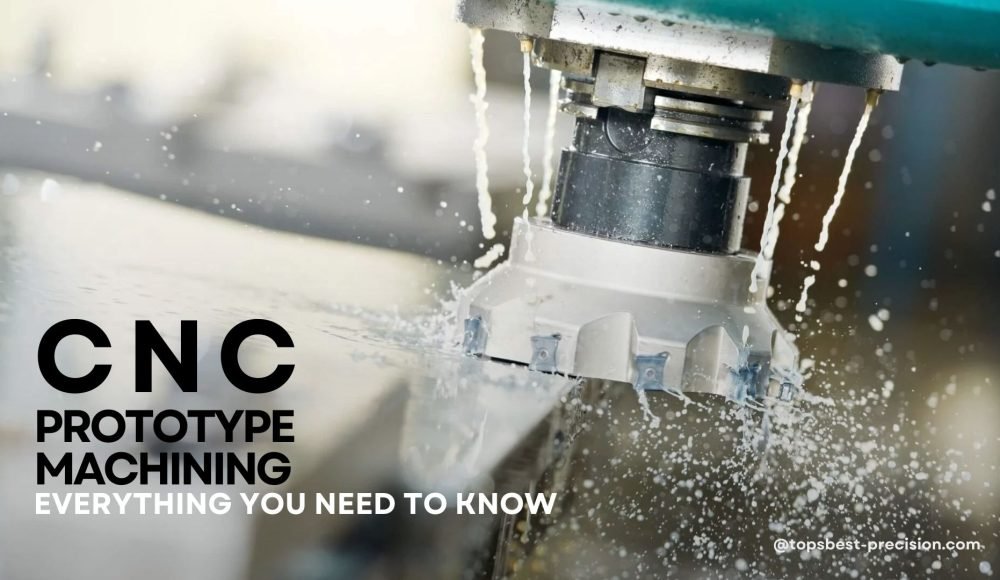
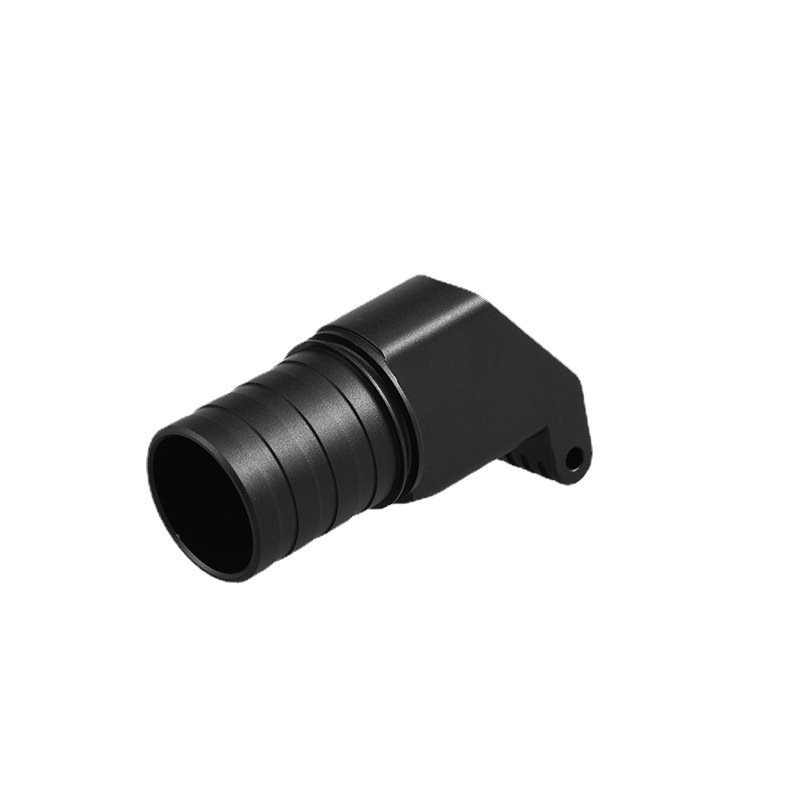

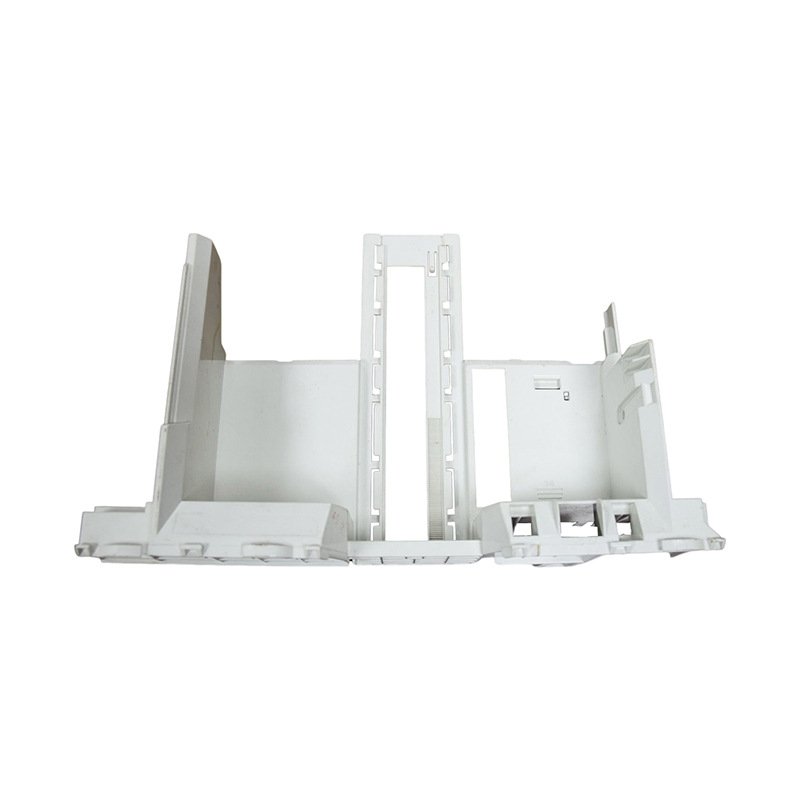
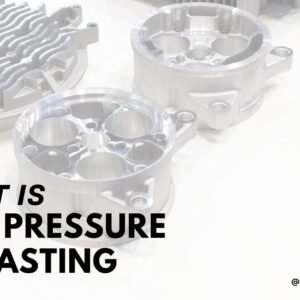
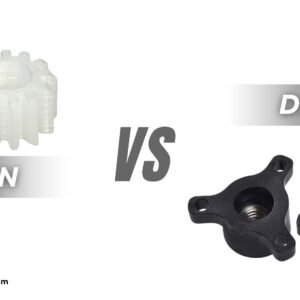
4 pensamentos "Usinagem CNC de Protótipos: Tudo o que você precisa saber”